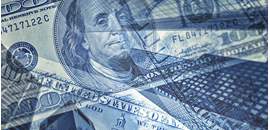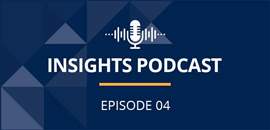Consider the profound changes in financial markets since the start of this year: The U.S. bond market has generated negative double-digit returns for the first time since the early 1980s, while the stock market has moved decidedly into bear territory. And while house prices are at record highs, 30-year fixed rate mortgages have nearly doubled to about 5.8 percent, the highest since 2008.
Inflation Likely to Stay Elevated
The Fed’s decision to raise the federal funds rate by 75 basis points to 1.5 percent – 1.75 percent at the June Federal Open Market Committee (FOMC) meeting was the largest since 1994. The announcement did not surprise market participants, mainly because it appears to have been leaked in advance to prepare investors. Nonetheless, while the stock market rallied following Chair Jerome Powell’s statement that he “does not expect moves of this size to be common,” it has since sold off as investors anticipate a hike of 50-75 basis points at the July FOMC meeting.The financial market gyrations mirror a sea-change in expectations about U.S. monetary policy. At the start of this year, Fed officials expected core PCE inflation would recede to 2.7 percent by the fourth quarter, and they foresaw the funds rate approaching 1 percent by the end of this year and 2 percent next year.
Now, the Fed’s latest FOMC quarterly projections show inflation is likely to stay elevated into next year. Accordingly, all 18 officials who participated expect the funds rate to be raised to at least 3 percent this year, with the median forecast being 3.4 percent this year and 3.8 percent next year.
This raises two questions. First, what caused Fed officials to act more aggressively than what they had signaled previously? Second, how does it alter the outlook for the economy and the risk of recession?
The answer to the first question is important, because investors need a clear understanding of the basis for the Fed’s decision making. One interpretation is that Fed officials worried they were “behind the curve” in tackling inflation when several measures, including the Fed’s index of common inflation expectations (CIE), rose solidly above its historical range since 1999. Therefore, the Fed needed to reassure the public that it would act decisively to bring inflation and inflation expectations under control.
Unfortunately, it is harder for investors to know how to respond to Fed guidance now, considering the Fed’s view of inflation was wrong and also that it has not articulated a clear framework for setting monetary policy. Saying that policy is flexible and “data dependent” is equivalent to saying the Fed will be reactive rather than proactive.
Global Challenges Continue to Mount
The Fed, of course, is not alone in facing challenges that are global in nature—namely, supply shortages linked to the COVID-19 pandemic and the Russian-Ukraine conflict that has contributed to surging prices for food and energy. As a result, central banks around the world are now tightening monetary policies to contain inflation.
Among developed countries, the Bank of England raised interest rates for the fifth time this week, and the European Central Bank is about to embark on raising rates next month for the first time in five years even though Europe’s economy is vulnerable to higher energy prices. As a result, there is growing risk of recession abroad.
As for the United States, my assessment is that the risk of recession is relatively low this year with a tight labor market and solid jobs growth. Also, while consumer confidence has weakened amid the market selloffs and losses in real incomes from high inflation, household balance sheets are strong and many people are now utilizing the buildup in savings they received from government programs during the COVID pandemic. Similarly, most businesses are benefiting from strong profit growth in the past two years, although it is likely to slow materially this year.
The big unknown is how much higher interest rates will have to rise to choke off inflation. If it stays elevated at 4 percent – 5 percent into next year, the funds rate would need to reach those levels so they are not negative in real terms. In a recent speech, Stanford University economist John Taylor suggested that a funds rate of 6 percent would be appropriate versus his previous estimate of 5 percent.
Among developed countries, the Bank of England raised interest rates for the fifth time this week, and the European Central Bank is about to embark on raising rates next month for the first time in five years even though Europe’s economy is vulnerable to higher energy prices. As a result, there is growing risk of recession abroad.
As for the United States, my assessment is that the risk of recession is relatively low this year with a tight labor market and solid jobs growth. Also, while consumer confidence has weakened amid the market selloffs and losses in real incomes from high inflation, household balance sheets are strong and many people are now utilizing the buildup in savings they received from government programs during the COVID pandemic. Similarly, most businesses are benefiting from strong profit growth in the past two years, although it is likely to slow materially this year.
The big unknown is how much higher interest rates will have to rise to choke off inflation. If it stays elevated at 4 percent – 5 percent into next year, the funds rate would need to reach those levels so they are not negative in real terms. In a recent speech, Stanford University economist John Taylor suggested that a funds rate of 6 percent would be appropriate versus his previous estimate of 5 percent.
Economy, Financial Institutions Better Positioned Than Previous Downturns
One lesson from the inflationary environment of the early 1980s is that the U.S. economy is more resilient to increases in interest rates than to a slowdown in credit: The economy did not succumb to double-digit interest rates for several years, but it swooned when the Fed implemented a voluntary credit restraint program for several months.
The good news is that financial institutions are in much stronger shape today than they were then or during the 2008 global financial crisis. Also, financial market conditions are not restrictive yet, and while corporate credit spreads have increased recently, they are still well below levels that are associated with recessions.
Finally, amid the debate about whether the economy is headed for a “hard landing” or a “soft landing,” the Fed should reflect on what it has learned from having to navigate the worst pandemic in 100 years. Few economists would quarrel with the initial response to take interest rates to zero when the economy nose-dived. Rather, the mistake the Fed made was to keep policy in “emergency mode” well after the economy and jobs recovered from the pandemic and inflation pressures were building.
The good news is that financial institutions are in much stronger shape today than they were then or during the 2008 global financial crisis. Also, financial market conditions are not restrictive yet, and while corporate credit spreads have increased recently, they are still well below levels that are associated with recessions.
Finally, amid the debate about whether the economy is headed for a “hard landing” or a “soft landing,” the Fed should reflect on what it has learned from having to navigate the worst pandemic in 100 years. Few economists would quarrel with the initial response to take interest rates to zero when the economy nose-dived. Rather, the mistake the Fed made was to keep policy in “emergency mode” well after the economy and jobs recovered from the pandemic and inflation pressures were building.
What Can Investors Do Now?
My take is that they should maintain confidence that the Fed will eventually win the battle against inflation. But they should also realize it will take longer to achieve that objective because of previous policy mistakes. Meanwhile, the risk of a policy error spawning a recession has increased. Therefore, markets are likely to stay volatile for some time to come.
A version of this article was posted to TheHill.com on June 17, 2022.
Past performance is not indicative of future results. This publication contains the current opinions of Fort Washington Investment Advisors, Inc. Such opinions are subject to change without notice. This publication has been distributed for informational purposes only and should not be considered as investment advice or a recommendation of any particular security, strategy, or investment product. Information and statistics contained herein have been obtained from sources believed to be reliable and are accurate to the best of our knowledge. No part of this publication may be reproduced in any form, or referred to in any other publication, without express written permission of Fort Washington Investment Advisors, Inc.






















